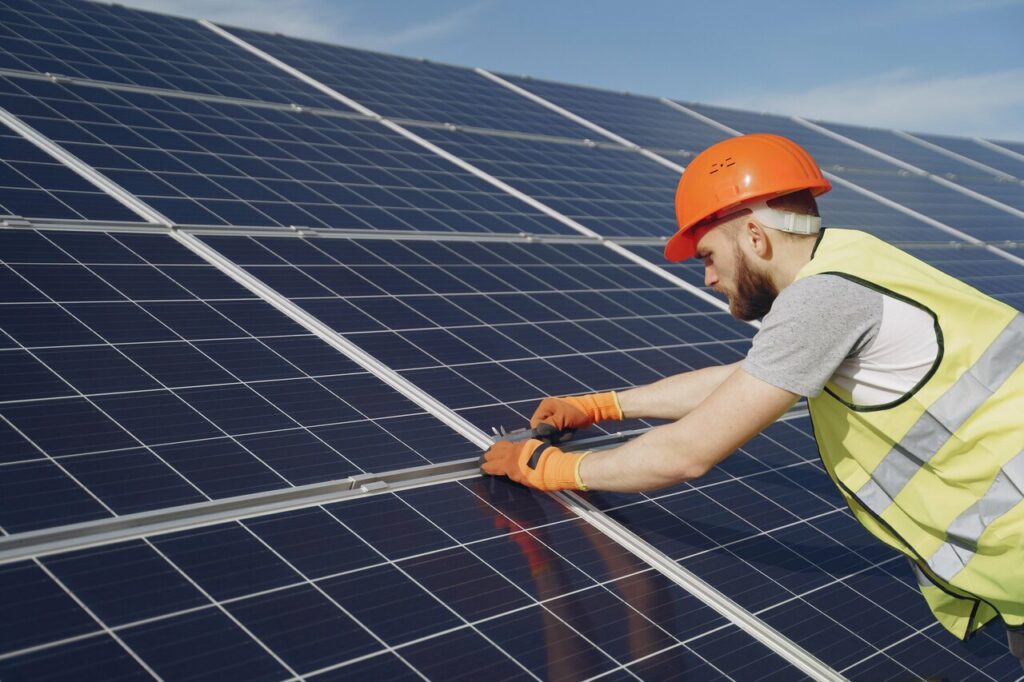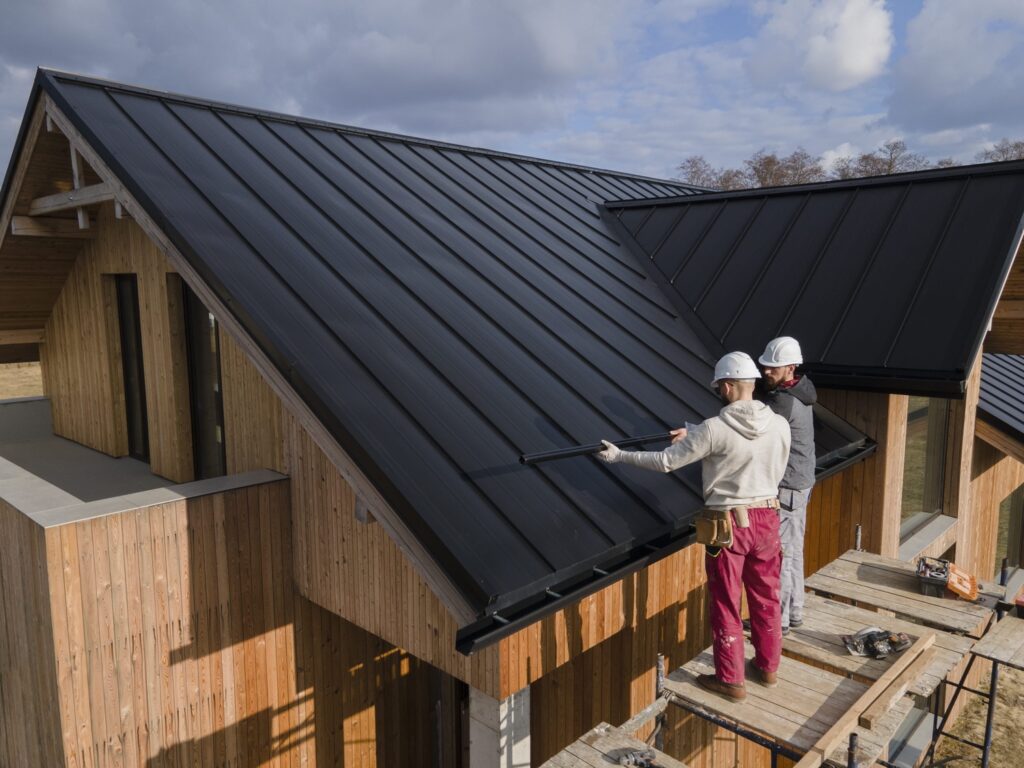Because a new roof is a significant investment, most homeowners look for opportunities to reduce the cost without impacting the quality of their roof installation. As with many things, saving money upfront can sometimes lead to greater costs down the road, so it is wise to consider the lifetime cost of a roof when making decisions.
However, one way to reduce the upfront costs is to through the use of existing and new roof tax credits. If available, a roof replacement tax credit can help defray some of the initial investment.
The rules about which roofing tax credit is available changes periodically, and may be dependent on whether you get a full roof replacement or simply add elements to an existing roof.
Tax Credits
In the past, the federal government has offered tax credits as a way of offsetting the costs of repairs or changes that make a home more energy efficient. A credit operates by reducing the amount of federal income taxes you owe. It is not cash in hand, but a direct deduction on your tax return.
What Is Roofing Tax Credit?
In general, a tax credit gets deducted from the amount owed at tax time. Tax credits can be expressed in percentage terms or in set amounts. Thus, if your total tax for a year was $1000, a 10% tax credit would reduce that amount by $100 to $900. A $100 flat credit would have the same effect, but a $50 flat credit would reduce the amount owed to $950.
The goal of some roof tax credits is to encourage homeowners to choose roofing materials that are effective at conserving energy. For example, through the end of 2021, some certified metal roofs with pigmented coatings or asphalt roofs with cooling granules were eligible for a tax credit. According to the website energystar.gov, this could be up to 10% of the cost (not including installation), for a maximum of $500.
This credit was given because ENERGY STAR roofing materials can decrease the surface temperature of a roof by up to 100 degrees. This can, in turn, decrease how much heat gets transferred into the home, reducing the need for cooling.
A tax credit for a new roof applies, obviously, to times when homeowners get a roof replacement. The amount of the credit varies depending on the specific circumstances and the tax breaks available at the time. Generally, tax credits are given for primary residences, but in some cases may be available for vacation homes or rental properties.

Residential Renewable Energy Tax Credit
Another type of tax credit is available for homeowners who install solar panels or photovoltaics. This tax credit, called the Residential Renewable Energy Tax Credit, could be used for solar panels or photovoltaics on your roof as long as they generate electricity that is used in the home.
There is no upper limit on the amount of the credit for solar equipment. The credit is for up to 30% of the cost, including installation, for tax years through 2019. The amount is reduced to 26% through 2022, and 22% for 2023. After that, the tax credit is set to end.
It is worth noting that you may be able to refile tax returns from previous years if you installed solar but did not claim the credit.
If you have a new roof installed with solar panels, you may be eligible for the tax credit. However, only the costs that are related to the photovoltaic system are considered in the calculation.
If you choose to use solar shingles or solar tiles that generate power for the home, you can consider all the components of the roof installation that are associated with solar generation.
Examples of Past Tax Credits
Assuming your roof was for a first home, which is the common type of roofing that people claim tax credits for, there are a few types of roofing that have qualified for tax credits in the past. Because tax credits, breaks, and incentives can be of a limited duration, it is always advisable to consult with a tax professional about your options in the current tax environment.
Past tax credits have included metal roofs, solar roofs, and green roofs.
Tax Credits for Metal Roofs
If you installed a metal roof on your home, you may have been eligible for a tax credit. Metal roofs are considered energy-efficient because they reflect heat away from the home, which can help keep cooling costs down. To qualify for the tax credit, the metal roof must have met certain standards set by the Internal Revenue Service (IRS).
Tax Credits for Solar Roofs
If you had a solar panel system installed on your roof, you may have been eligible for a tax credit. Solar roofs are considered energy-efficient because they generate electricity from the sun, which can help offset your energy costs. The IRS set the conditions for the specifications that solar roofs had to meet to be eligible for the tax credit.
Tax Credits for Green Roofs
Installing a green roof on your home might have made you eligible for a tax credit. Green roofs are considered energy-efficient because they help insulate the home and keep it cooler in the summer and warmer in the winter. The credit was available if your new roof met the IRS’ requirements.

Is There a Tax Deduction for a New Roof?
Tax deduction is different than a tax credit. A tax deduction is an expense that can be subtracted from your taxable income, which reduces the amount of taxes you owe. A tax credit, on the other hand, is a dollar for dollar reduction in the amount of taxes you owe.
Homeowners often are disappointed when their roofing contractor tells them that there is no immediate tax deduction for a new roof. However, according to TurboTax, a new roof does qualify as a capital improvement – which increases the cost basis of your home when you sell it. (This is relevant if the profit on the sale of your home is more than $500,000 for a married couple or $250,000 for a single individual.)
Other Tax Incentives for Roofing
Individual states can offer their own tax credits, breaks, or other incentives.
For example, in the state of Florida, there is a Property Tax Abatement for Renewable Energy Property incentive for adding a new photovoltaic system. This is a property tax exemption on the added home value from the rooftop solar system. This is valuable because installing a solar energy system could increase your property value by approximately 4%.
Florida also offers a home solar system exemption from state sales tax. If you purchase a new rooftop solar system, you will not have to pay any state sales tax. This applies to the entire cost of a new home solar installation, meaning that you could save 6% on the upfront expense without the exemption.
Other states also offer various incentives for roofing, so regardless of where you live it pays to do some research into your options. For example, California has several incentive programs and rebates that are intended to increase access to solar panels.
Reasons to Invest In Energy Efficient Roofing
Many tax incentives for roofing are related to energy efficiency, because governments want to incentivize the purchase and installation of roofing materials that help conserve energy. Regardless of whether there are tax reasons for investing in energy efficient roofing, there are several other important benefits:
- Lower energy bills: Energy efficient roofing can help to keep your home cooler in summer and warmer in winter, which can save energy and lead to lower energy bills.
- Improved comfort: An energy efficient roof can help to create a more comfortable living environment by regulating the temperature inside your home.
- Enhanced durability: Many energy efficient roofing materials are also designed to be more durable than traditional roofing materials, meaning they can last longer and require less maintenance over time. This can have the added benefit of minimizing the amount of roofing materials that end up in landfills.
- Improved aesthetics: Many energy efficient roofing materials are available in a variety of colors and styles, which means they can help to enhance the curb appeal of your home. It is no longer necessary to install unattractive solar panels if they detract from your home’s aesthetic since there are so many options.
- Environmental benefits: By reducing the amount of energy your home consumes, energy efficient roofing can also help to reduce your carbon footprint and do your part to protect the environment.
Best Roofing Company in Florida
When you need roofers for your home or business, contact Stronghold Roofing & Solar in and near Lakeland, FL. We offer a full array of roofing services, including roof installation, roof repair, and roof maintenance.
At Stronghold Roofing & Solar, We have completed projects of all sizes all over Lakeland, Valrico, Winter Haven, Plant City, Brandon, Davenport, and beyond throughout Florida.
We offer 24/7 service for those times that an emergency strikes. Our financing team can work with you to secure financing that allows you to break the cost of your roofing project into manageable monthly payments. If your project involves homeowner’s insurance, we can work directly with your insurance company to ensure that all the information for your claim is processed quickly and correctly.
Contact us today for a free estimate or to ask about our roofing and solar capabilities.










